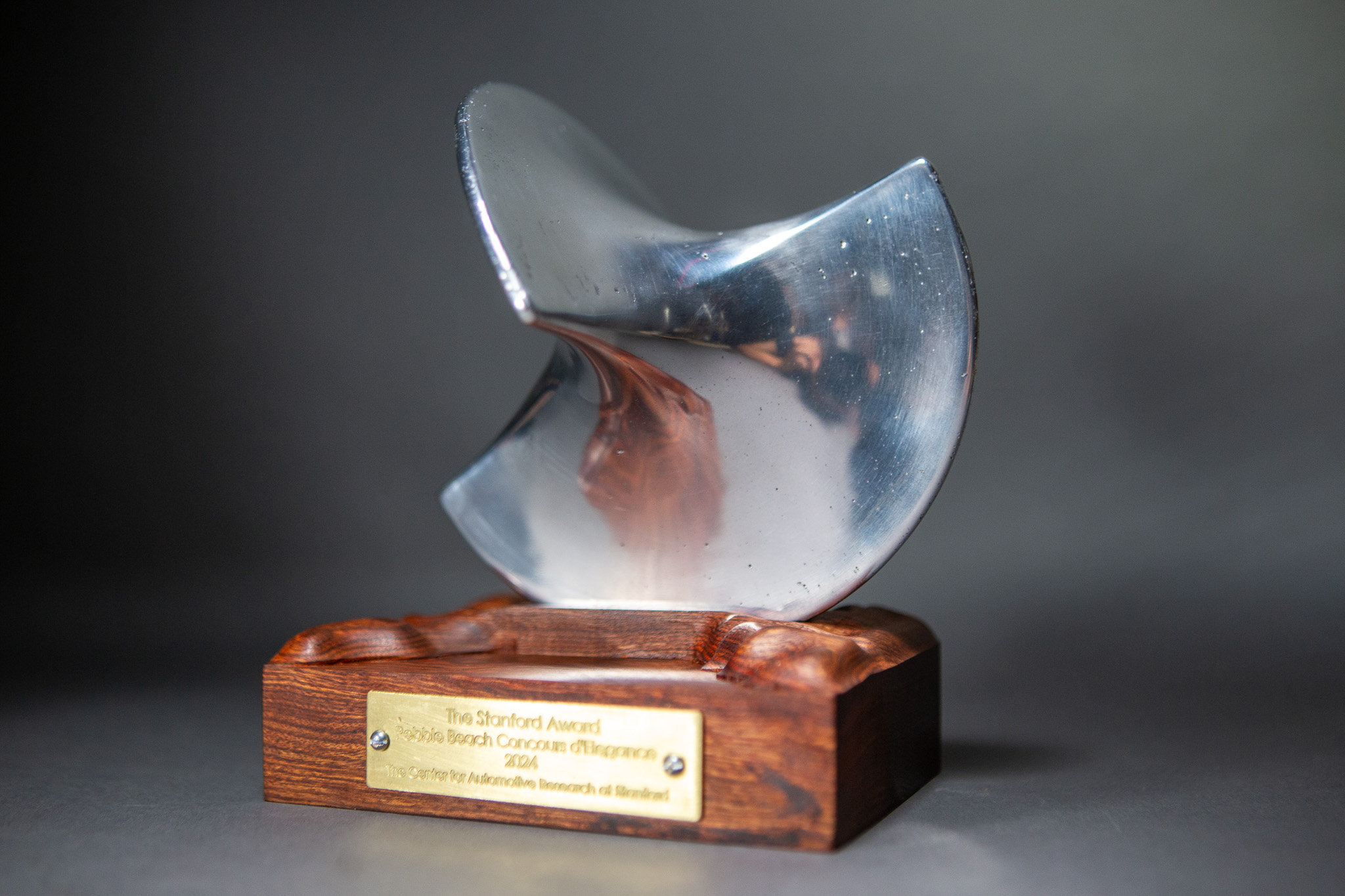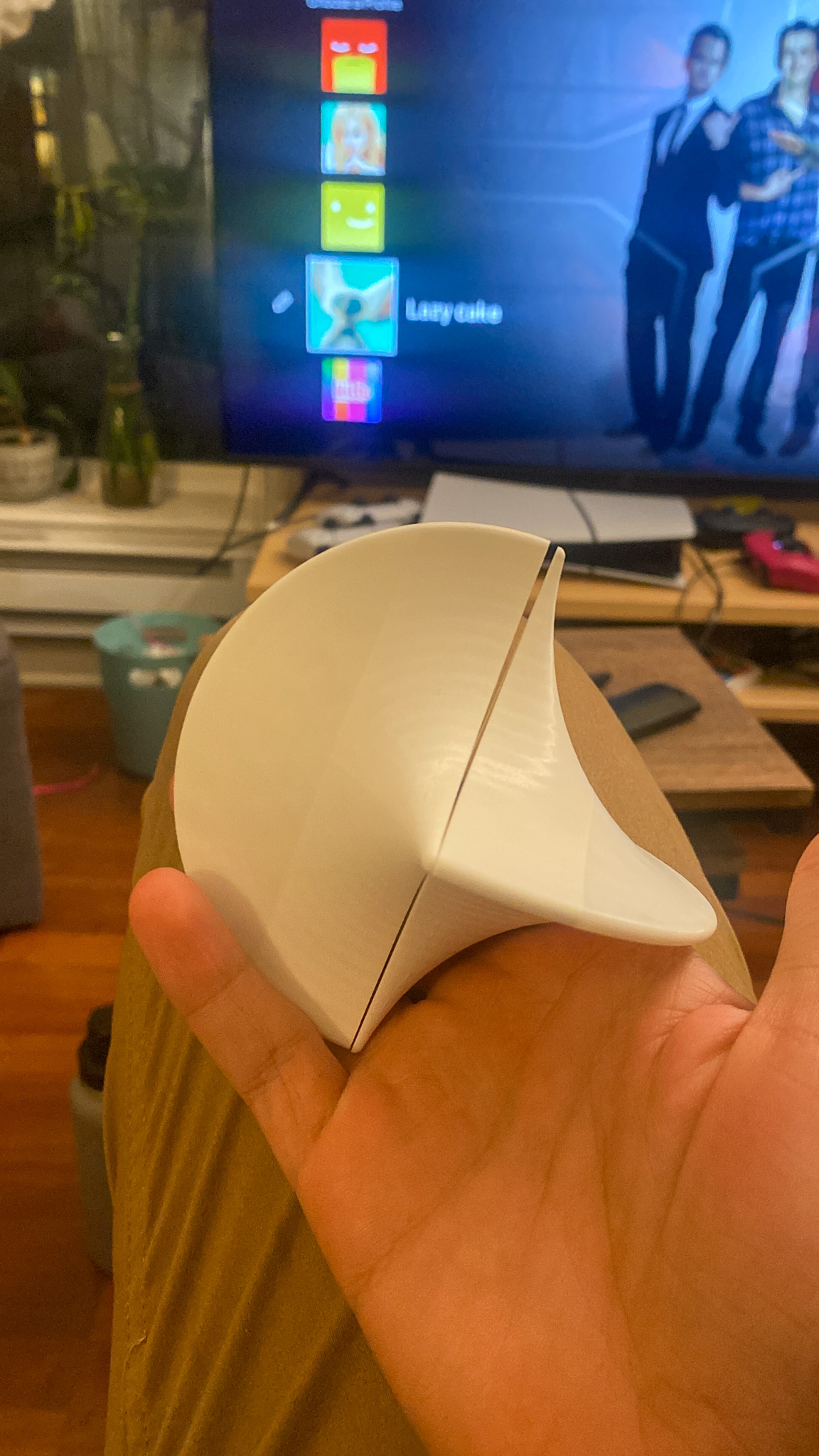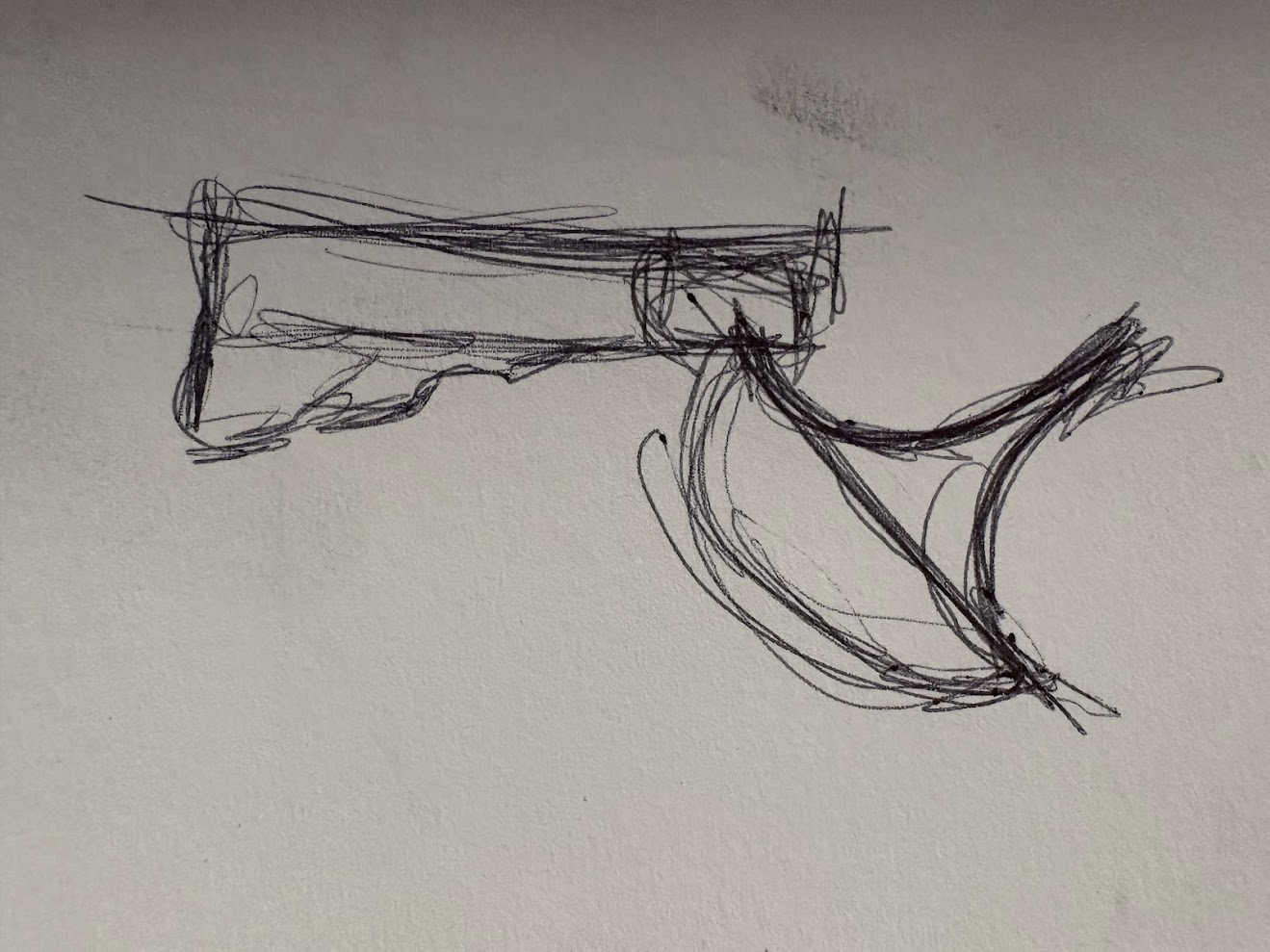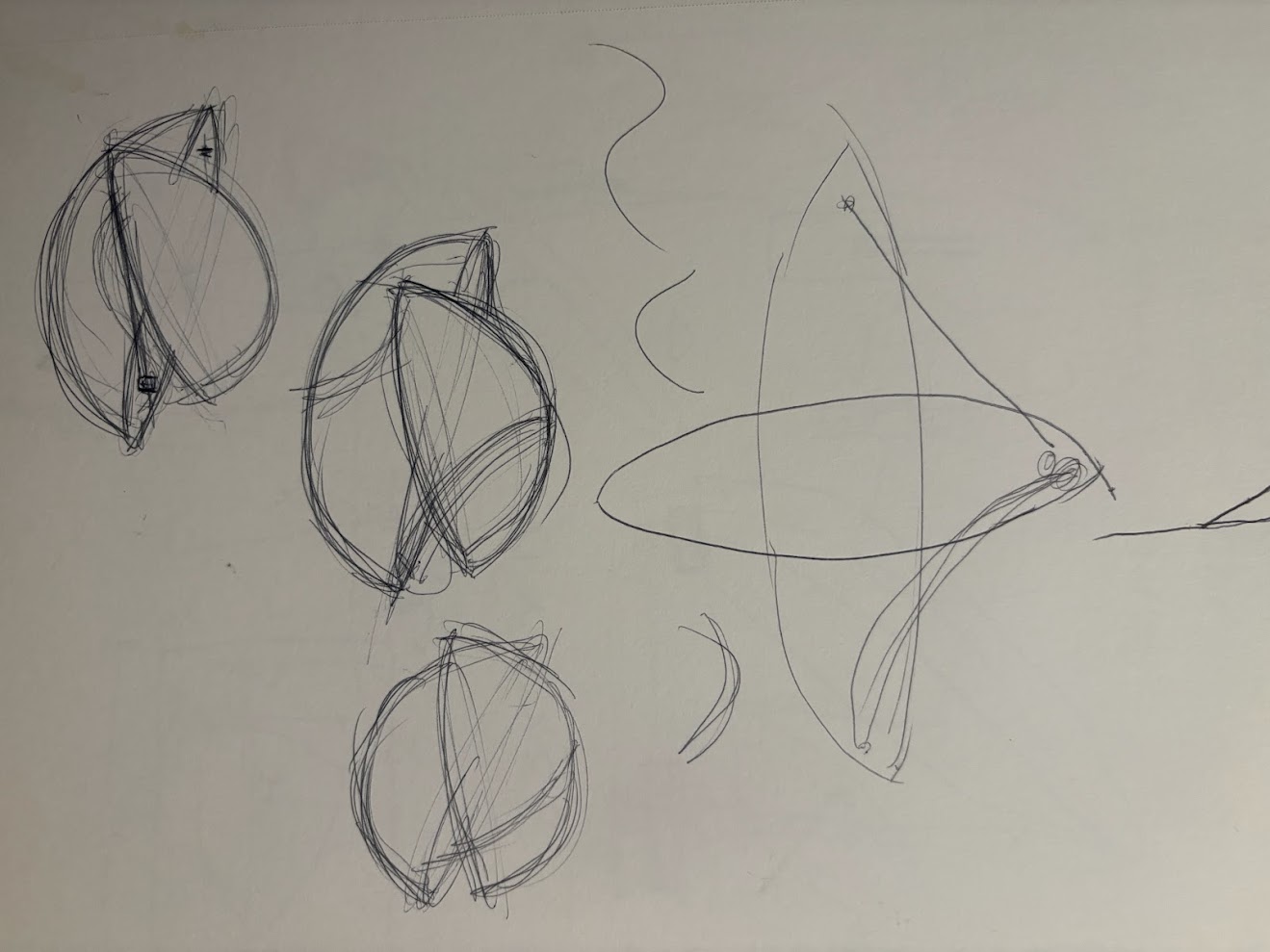
5 weeks
Summer 2024
Cast Aluminum
Carribian Rosewood
Brass Sheet
Sand Casting
CNC
3D Printing
Kinematic Design
Pattern Making
CAD and CAM
Moving between a few sketches and initial ideas, the Sphericon geometry was the one that stuck with us. So we 3D printed two regular Sphericons to ideate and evaluate the design with the physical model in hand. The rolling motion was fantastic to see but we needed to work on two things:



To address those two issues I modeled two versions with narrower profile for better ergonomics and I redesigned the side curves to be more dynamic. in one of them I went with the direction of making the beginning of the side curve flat with the a small radius in the center of the shape. The other one had a smoth but sharp curve that looked more natural.
For casting, I ensured the designed had a minimum draft angle of 5° for a clear release for the mold. both shapes had a maximum thickness of 2.1 inches near the middle to avoid casting defects and sink. And finally the gate and runner were modeled to ensure sufficient metal flow while also being easy to remove in post processing.
Ramming up was challenging because of how high and narrow the shape was. After having sand breakoffs with both patterns we remulled the sand and added more water. to achieve slightly more adhesion between sand particles.
In the second round of ramming up the narrower design failed again but the smoother one pulled cleanly with minimal breakoff.
We're finally ready to pour.
We poured 3 sand molds to have a better chance of success, and low and behold the 3rd mold in line (which had the coldest pouring temperature) was the only one with no sink with the first two have minimal sink near the center of the shape.
As I moved along the sanding grits, we were testing different designs for the base
We moved towards the idea of having the trophy, which is inspired by the Dish, sit on the topography of the coastline near pebble beach, specifically Bixby Bridge.
David Kelly guided and supported us throughout the whole process, and handing the trophy over to him to be delivered to Pebble Beach would be a day I remember for ever!